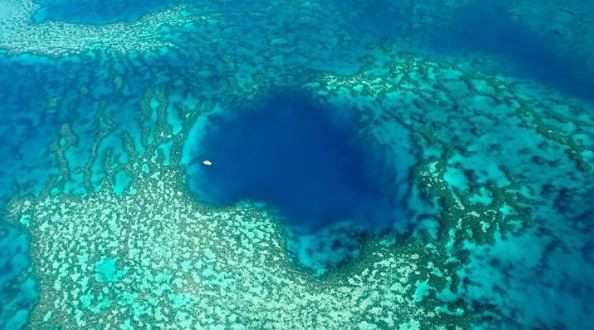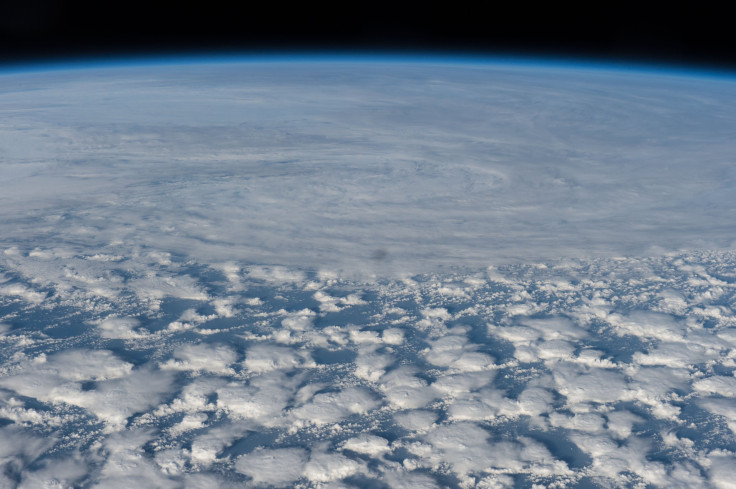Marine Biologist Dives Into Deep Blue Sinkhole In Great Barrier Reef

A giant sinkhole off the coast of Australia goes so deep that it protects marine life from hurricanes.
Marine biologist Johnny Gaskell explored the enormous hole in the seafloor located within the Great Barrier Reef, the large structure off Queensland that is home to countless creatures. According to a video post on Instagram, Gaskell found the sinkhole for what may be the first time with satellite imagery.
“After spotting this deep blue hole on Google Maps we decided to head far offshore, out further than our normal reef trips to see what dwelled within,” he wrote. “What we found inside was hard to believe considering five months ago a Cat. 4 cyclone went straight over the top of it.”
While diving down between 50 feet and 65 feet, according to Gaskell’s post, he found colonies of birdsnest corals and staghorn corals, “both of which were among the biggest and most delicate colonies I’ve ever seen.”
Corals are organisms that live together in vast communities and create, as a byproduct of their life processes, the hard rocky material that forms a reef. They take a long time to become the massive structures that we see in the ocean today, with a maximum grow rate of a few centimeters each year, the U.S. National Ocean Service explains. “It can take up to 10,000 years for a coral reef to form from a group of larvae. Depending on their size, barrier reefs and atolls can take from 100,000 to 30 million years to fully form.”
The terms “barrier” and “atoll” refer to the reef formation.
“Coral reefs begin to form when free-swimming coral larvae attach to submerged rocks or other hard surfaces along the edges of islands or continents,” the NOS says. Fringing reefs remain around the shoreline while barrier reefs and atolls form when the land sinks below the ocean surface. With a barrier reef there is still land visible above the surface at the center of the reef, but in atoll reefs it has become completely submerged.
Reefs are formed by the coral but they become home to other marine life as well, such as fish, molluscs, turtles and dolphins. The Great Barrier Reef is the largest reef and the largest living structure in the world, bigger than the Great Wall of China, and it can be seen from space.
In the case of the underwater sinkhole in the Great Barrier Reef that Gaskell found, the corals in there were “totally unaffected by the cyclone,” he wrote on Instagram. “The position of this deep hole within the lagoon walls has obviously protected these corals for decades.”
The cyclone the marine biologist is referring to is probably Cyclone Debbie, a category 4 hurricane that formed in the waters off Queensland in late March and dissipated in early April. That tropical cyclone was the most dangerous the area had seen in several years, and the deadliest one to hit in decades.

The storm also hit other areas in Oceania, including New Zealand.
If the sinkhole has never before been discovered, it has a potential name.
According to the marine biologist’s Instagram post, “We may very well be the first to ever dive Gaskell’s Blue Hole as it was so far offshore and hidden deep within one of the Great Barrier Reef’s biggest lagoons.”
© Copyright IBTimes 2024. All rights reserved.





















